How to ramp up your sales with email coupons (with 11 examples)
 MailerLite team members Ernesta, Renata, and Marta.
MailerLite team members Ernesta, Renata, and Marta.
Looking to rev up your sales or clear off excess inventory? Email coupons might just become the star of your campaigns. 🤩
Plus, they can build your brand and ramp up engagement when used correctly.
Remember when people clipped coupons from magazines, cereal boxes, or newspapers? Well, today, they love getting exclusive offers and promo codes online even more!
In fact, just in the US, people spend 5 to 10 minutes searching for digital coupons before buying something online! This, no doubt, has digital marketers and retailers dancing on the rooftops! So, if you're not already using them, email coupons should definitely be on your radar.
Let's find out more about the different types of email coupon codes and their benefits, then explore how you can craft your own effective email coupon campaign.
What are email coupons?
Email coupons are vouchers or codes that you can send to your subscribers, offering special deals to encourage a purchase.
It's interesting how customers often spend more with a coupon than they planned! Knowing they're saving money with a promo code, or getting perks like free delivery, makes them more willing to buy. Email promotions like coupon codes simply make your product or service even more desirable.
You can now create and sell your digital products right in your MailerLite platform!
The core benefits of email coupons for your business
As we already mentioned, email marketing coupons are a great way to drum up sales and drive interest in your business. Here are some key benefits for you to consider:
Boost sales and increase AOV
Coupons directly boost sales. They also encourage customers to add more to their cart to reach a discount threshold, which helps increase your average order value (AOV). For example, a "Buy one, get one 50% off" offer can lead customers to purchase more than they initially planned.
Drive urgency and FOMO
Coupons are fantastic for encouraging quick action. When customers see a limited-time offer, they're more likely to buy right away rather than putting it off and potentially forgetting.
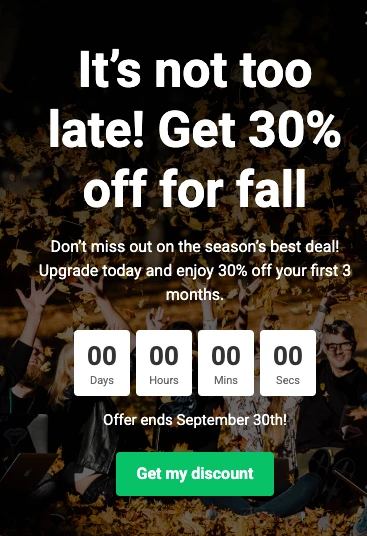
Increase customer acquisition
Offering a discount to new sign-ups or first-time buyers is a proven way to bring in new customers. It lowers the barrier to purchase and gives potential customers a compelling reason to try your products or services.
Improve customer retention and loyalty
Coupons aren't just for new customers. Sending special discounts to your existing, loyal customers is a wonderful way to show appreciation, build stronger relationships and encourage them to keep coming back.
Re-engage inactive customers and abandoned carts
Sometimes customers need a little nudge to complete a purchase or return to your store. You can encourage people to revisit their shopping carts with a personalized offer straight to their inbox, like a small discount or free shipping. A gentle reminder that often works wonders!
Gather valuable data
Tracking coupon redemptions provides useful insights into customer preferences and campaign effectiveness. Seeing which products are bought with certain coupons can reveal what your audience values. Plus, you can use a coupon as a reward for completing an email survey, gathering even more valuable feedback directly from your customers.
11 coupon code ideas and examples
There are a few different types of email coupons. Before you choose one, think about your audience’s desires and pain points. Would they like a discount when they make a purchase? Or would they get more excited about free delivery? If you are not sure, you can test them! We’ll talk about testing down below.
But first, take a look at the different types of coupon code ideas and examples.
1. Discount coupons
These are the most commonly used email coupon types. They let your subscribers pay a reduced price for your product, using a special link or code.
Percentage-based discounts: These are ideal when you want to highlight significant savings across a broad range of products. They work well for seasonal sales, clearance events, or general email promotions. For example, a home decor brand launching a new collection might offer "20% off all new arrivals" to generate initial excitement and sales volume.
Dollar amount discounts: These coupons are often more effective when you want to clearly show a tangible saving without needing complex calculations from the customer.
The "Rule of 100" suggests that for purchases under $100, a percentage-off coupon feels like a better deal, while for purchases over $100, a dollar-off coupon is usually perceived as better.
Who benefits?
E-commerce brands shine with percentage-based discounts for big seasonal sales, clearing out stock, or promoting higher-priced products
Online furniture stores could offer a $200 off on any items worth over $1,000
Discount coupon email subject line ideas:
Your weekend treat: Grab 20% off everything!
Here's $10 off your next order!
A treat from us: Enjoy $x off your purchase! 🍦
Here’s a discount coupon email template you can grab on MailerLite:
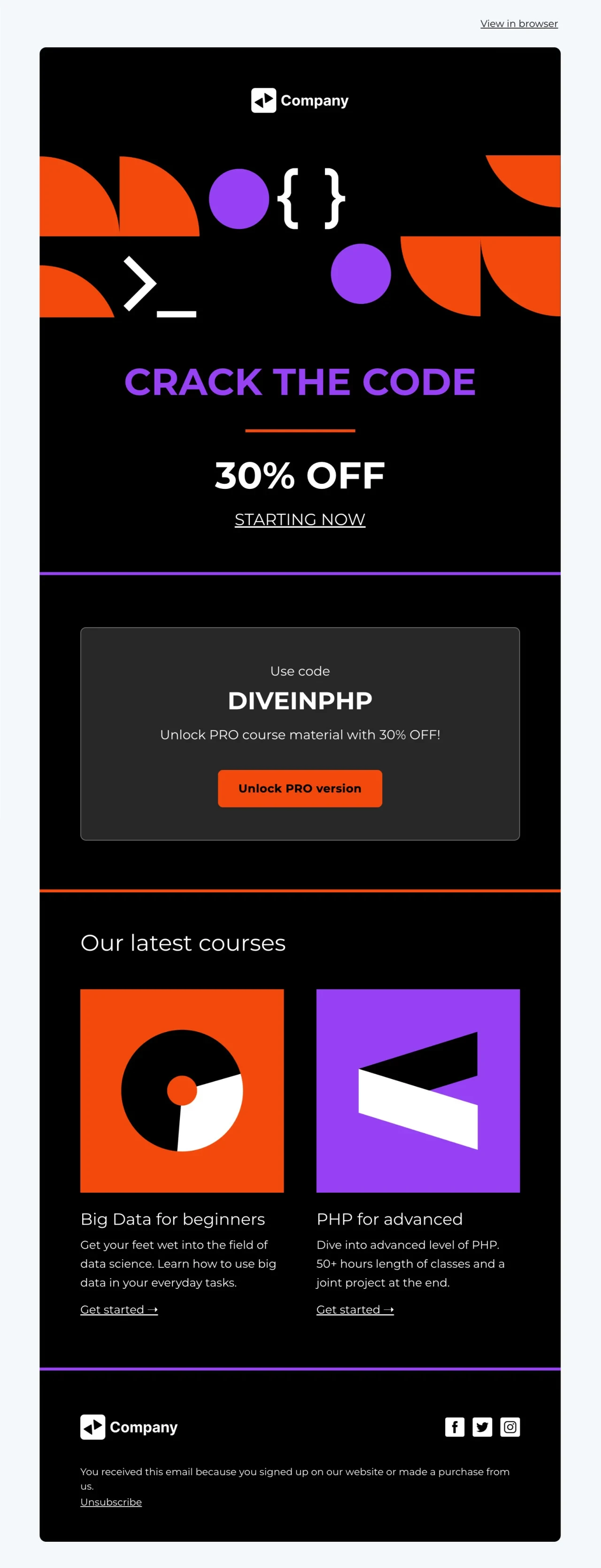
If you offer single-use email promo codes, avoid people signing up for the discount multiple times with disposable email addresses by filtering them out with the email list verification API.
2. Email sign-up coupons
Sign-up coupons are a great motivator for people to join your email list. Set up a form or pop-up on your website that promises a special discount or free delivery for the first order, then watch the subscribers come flooding in!
This expands your reach for future marketing efforts and provides an immediate incentive for new leads to become paying customers.
Take Jennifer Peddio of Hyggekrog, for example. She effectively uses a pop-up on all her website pages, offering a 10% discount for signing up.
This achieves 2 key goals:
1. It encourages buyers to make a purchase.
2. It turns her website visitors into email subscribers.
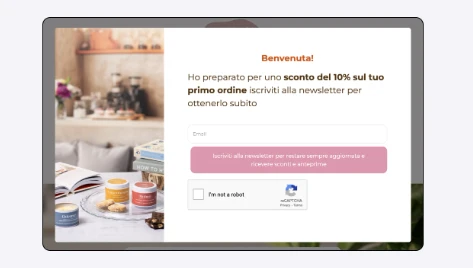
Who benefits?
Small businesses and e-commerce companies use these email promotions to convert website browsers into first-time customers and to build their email subscriber lists
Coaches and creators take advantage of these to build their audience by offering a discount on an introductory course or a digital asset bundle
Email subject line ideas (for the welcome email with the coupon):
Welcome! Here's your special 10% off! 🤗
Your exclusive offer: Welcome to our community! 😇
Hello [Name]! Your first perk is here!
3. Free gift coupons
If you want to build loyalty or increase your average order value, reward your VIP customers with an extra sweetener like a free product or free sample coupon. It's a great way to show appreciation and incentivize them to spend more.
For example, an online bookstore might offer a "Free Bestseller with orders over $50," encouraging customers to add more items to their cart to reach the threshold for the free gift.
Who benefits?
Businesses selling physical goods, like beauty brands, often offer a complimentary sample or a travel-size product with a minimum purchase, enhancing the customer experience
Creators might provide a free bonus template or a mini-guide with the purchase of a larger product or course
Free gift coupon email subject line ideas:
A free gift just for you, [name]! 🎁
Spend [x], get a free [gift item]!
Your EXCLUSIVE freebie awaits! 👀
4. Free delivery or shipping coupons
Free shipping after a certain price threshold is a super popular buying incentive, and for good reason! Did you know that around 40% of customers in the US ditch their shopping carts because of extra costs like shipping? Removing that barrier with a free delivery coupon can really boost conversions and lower frustrating cart abandonment rates.
For general promotions, offering "Free shipping on all orders over $X" can also encourage customers to add more to their cart to qualify, much like free gift coupons.
Who benefits?
E-commerce companies rely on free shipping to reduce cart abandonment and encourage customers to complete their purchases
Small businesses selling physical products, especially those with unique or fragile items, can make shipping costs less of a hurdle for their customers
Free delivery email subject line ideas:
Don’t worry, delivery is on us! 😉
Free delivery on all orders over [x]
Did someone say free delivery? 😮
5. VIP or exclusive coupons
Want to make your email subscribers feel extra special? Offer them a VIP discount code for their next purchase. VIP loyalty programs really boost sales by giving customers that feel-good factor, showing them how much you value them.
Take a look at a VIP coupon email template from MailerLite:

Remember Jennifer Peddio of Hyggekrog? In her welcome email to subscribers, she mentions her loyalty program, which awards buyers points each time they buy from her store.
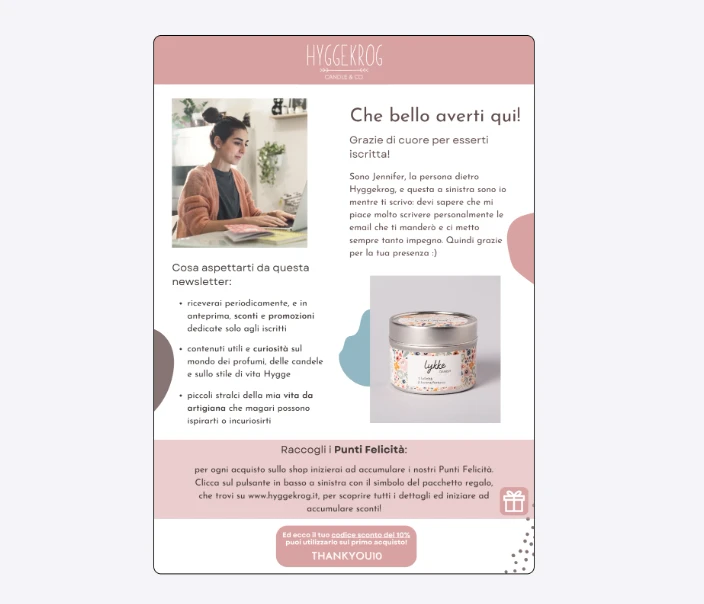
She reported that not only does this email receive a super-high open rate hovering around 90%, but it also gets a click rate of over 30%.
Who benefits?
Subscription box companies often reward their loyal subscribers with special discounts on new products or exclusive access
Agencies might provide exclusive rates or early access to new services for their most valued, long-standing clients
VIP email subject line ideas:
VIP access granted 😎. Your exclusive offer!
Here's a VIP perk because you're awesome! 🤩
Unlock your VIP savings, [name]! 🤑
6. 'BOGO' (buy one, get one) coupon
Yep, it’s a funny word! ‘BOGO’ stands for ‘buy one, get one.’ This high-value coupon rewards customers with a free product when they make a qualifying purchase.
BOGO offers help in clearing excess inventory, promoting new products by pairing them with popular items, or boosting sales volume.
For example, a specialty tea company looking to introduce a new herbal blend might send an email promotion: "Buy one, get one free on our new Serenity Blend." This lets customers try the new product without perceived risk and helps the company move more inventory quickly.
Who benefits?
E-commerce companies find BOGO deals incredibly effective for quickly moving inventory and encouraging customers to try new varieties
Digital template creators might offer a "buy one template pack, get one free" to quickly introduce a new line of products
BOGO email subject line ideas:
A free gift, just for you {$name} 🎁 Details inside…
Two for the price of one - today only 🎉
How about 2x [product], {$name}?
7. Multiple or tiered discount coupons
If you want to boost your revenue even further, offer tiered discounts. By increasing the discount as the customer's total spend grows, you incentivize them to add more items to their cart to reach the next discount tier.
For example, an online stationery store might offer:
$10 off orders over $50
$30 off orders over $100
$60 off orders over $150
This structure clearly communicates the potential savings and subtly nudges customers towards higher-value purchases, maximizing the promotion’s impact.
Who benefits?
E-commerce companies like online homeware or art supply stores often use tiered discounts to increase average order value by encouraging customers to buy more items
Coaches offering multiple programs or extended packages could use tiers to motivate clients to commit to more extensive coaching journeys
Tiered-discount email subject line ideas:
The more you spend, the more you save!
Your savings grow with your cart!
How much can you save? Find out here! 👇🏼
8. Flash sale coupons
Flash sale coupons use scarcity and urgency to drive rapid, high-volume sales. These short-term promotions, often lasting just a few hours or a single day, offer significant discounts. Their limited-time nature creates a powerful incentive for immediate action, stopping customers from delaying a purchase.
Logistically, flash sales need careful planning to ensure your inventory and website can handle the demand.
Here’s an interesting flash sale spin the wheel template you can find on MailerLite. This keeps it exciting for the customer as they spin the wheel and wonder which deal is in store for them:
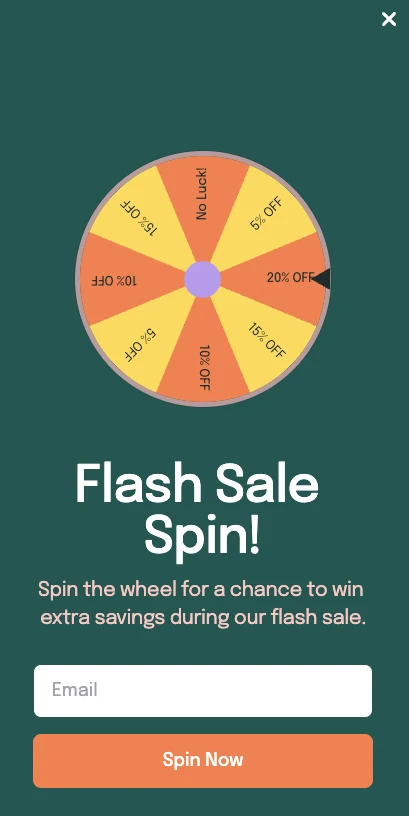
Home appliance brand, Fridja offered an extra 10% off on Black Friday to new email subscribers with the help of MailerLite’s automation.

Who benefits?
E-commerce companies like apparel, accessories, and tech gadget brands are masters of flash sales for quickly selling off inventory, creating buzz, or hitting rapid sales targets
Coaches or authors can use a flash sale for a limited-time offer on a popular course or a newly released book to get a surge in downloads and visibility
Did you know you can now sell digital products right on the MailerLite platform? Check out this video to know more:
Flash sale email subject line ideas:
30% off all products, today only 🙌
The big sale ends in 10… 9… 8…
Your offer expires in 1 day, {$name} ⏳
Tick tock… tick tock… Sale ends in 12 hours
9. Referral coupons
Referral coupons are an excellent way to incentivize word-of-mouth marketing and turn your existing customers into brand advocates. By rewarding both the referrer and the new customer, you create a powerful acquisition cycle driven by trusted recommendations.
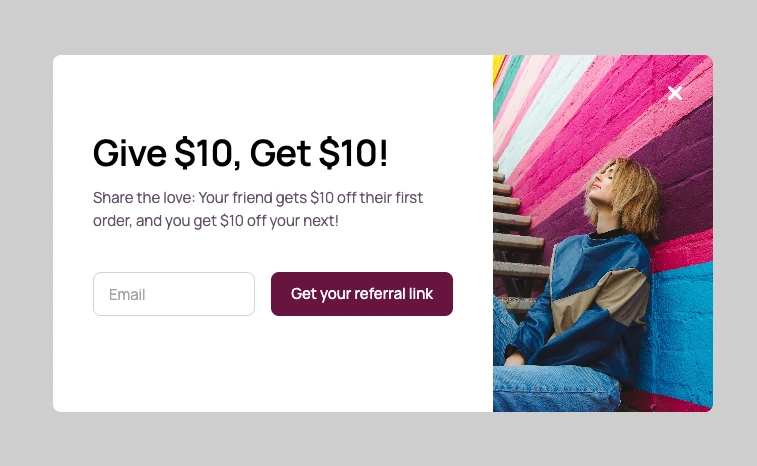
For instance, an online fitness coaching platform might offer "Give a friend 20% off their first month, and get 20% off your next month when they sign up!" This encourages existing satisfied clients to spread the word, bringing in new customers who are more likely to convert due to the personal recommendation.
Who benefits?
Coaches and agencies thrive on referrals, as personal recommendations often lead to high-quality new clients
Creatives can encourage their fans to spread the word about their work, reaching new audiences organically
Referral coupon email subject line ideas:
Share the love, get rewarded! 💰
Give a friend [x]% off, and you get [y]% off!
Want free [product]? Refer a friend! 🤝
10. Birthday and anniversary coupons
Birthday and anniversary coupons are a powerful personalization tactic that makes customers feel seen and appreciated. Automated birthday emails with a special discount or gift on their big day or on their customer anniversary can increase your engagement and drive repeat purchases. This personal touch shows customers you value your relationship.
Hyggekrog uses personalized birthday emails with coupons to delight its customers. This strategy celebrates the customer while also giving them a gentle nudge towards a purchase.
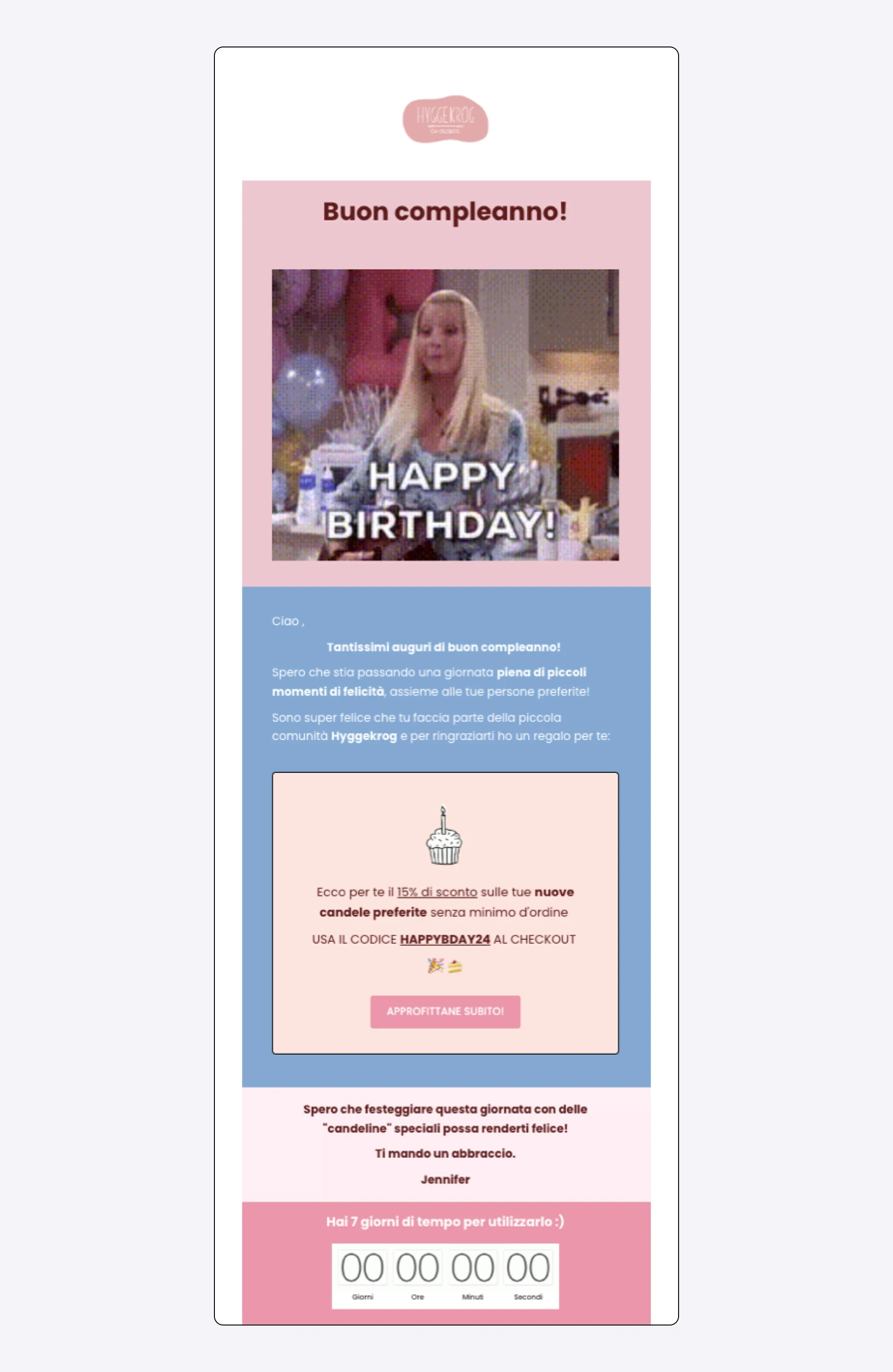
Who benefits?
All MailerLite customers can use this for building deep customer loyalty and increasing repeat purchases. It's universally appreciated!
Anniversary or birthday email subject line ideas:
Happy birthday, [name], here's a gift from us! 🥳
Celebrating you! Enjoy your anniversary gift!
[Name], your birthday surprise is waiting!
11. Mystery discount coupons
Mystery discount coupons build intrigue and excitement, encouraging recipients to open your emails and click through to reveal their special offer. This surprise element adds a fun, gamified aspect to your promotions, making them more memorable and engaging.
For example, an online lingerie store might send an email with the subject line "Unlock your secret savings! 🤫" with a call to action like "Click to reveal your mystery discount!" The customer then lands on a page where their specific discount (e.g., 10% off, or even a free gift) is revealed. This compelling interaction can lead to higher conversion rates due to curiosity.
Here’s a mystery discount email template you can use on your MailerLite account:
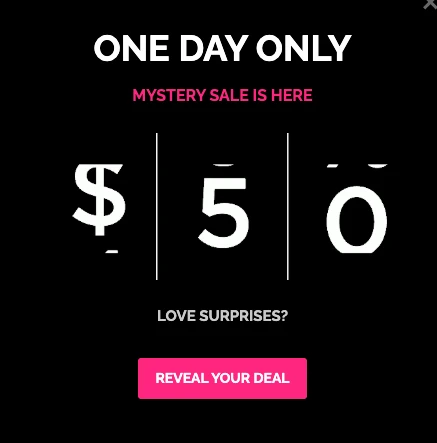
Who benefits?
Online jewelry stores or specialty clothing boutiques can use these to create immediate engagement and drive impulse purchases
Platforms offering diverse courses, like Udemy or DailyOM, could use a mystery discount to encourage subscribers to explore their full catalog with a fun element of surprise
Mystery email subject line ideas:
Unlock your secret savings! 🤫
A mystery offer just for you, [name]!
Feeling lucky? Discover your mystery deal!"
Crafting a high-converting email promotion
Ready to send out some amazing coupon emails? Before you hit send, a little strategic planning goes a long way. Think of it as laying the groundwork for a truly successful campaign.
Before you write: Strategic planning
Set clear objectives
What do you hope to achieve with this email coupon? Simply sending a coupon isn't enough; you need a clear goal.
Do you want to boost overall sales for a specific product line?
Are you aiming to reward your most loyal customers?
Perhaps you have some seasonal stock you need to clear out?
Defining your objective from the start helps you choose the right coupon, target the right audience, and measure success. For example, if increasing customer loyalty is your goal, a VIP-exclusive discount makes more sense than a general flash sale.
Understand your audience and segment your list
It's tempting to send promotions to everyone, but the best practice is to make your email coupons as targeted as possible.
The more relevant your email promotion, the better your conversion rates will be. You can segment your subscribers by factors like location, previous purchases, or interests, allowing for more personalized promotions.
For example, you might send an email coupon specifically to new customers or only offer free delivery in the US. With subscriber segmentation and groups, the possibilities are endless.
Difference between segments and groups:
A segment is a list of subscribers that are defined by a ‘rule’, such as those who have joined in the last 30 days. This list will update itself automatically, based on the rule
A group is not defined by a rule, and you can add and remove subscribers in the group however you like
Decide what you're promoting
Once you know your objective and audience, decide what products, services, or goals your coupon is tied to
Are you offering a discount on your entire store, or just a particular category?
Is this coupon for a service subscription or a physical product?
Tying the coupon to a specific item or collection can help guide customer choice and streamline inventory.
It’s easy to get excited about how awesome email coupons are (we don’t blame you), but just remember—don’t overdo it!
If your email subscribers feel that you’re constantly firing off promotions, they might just wait for a discount before buying. This could delay sales, or even worse, lead to coupon-overload and unsubscribes.
The best rule of thumb is to save your coupons for major holidays, and/or when you really need to drum up sales. Occasional promotions build brand loyalty and awareness, overdoing them can backfire.
During the design and writing phase
Now that your strategy is in place, it’s time to bring your email promotion to life. This is where you craft the message and design that will truly grab your audience's attention.
Create an irresistible subject line
Your subject line is your first impression, and it's crucial. For discount email subject lines, write short, clickable copy that makes subscribers want to open it right away!
Focus on creating a sense of urgency, personalization, and communicating clear value. For example, instead of "Sale," try "Your 24-hour deal: 20% off just for you, [Name]!"
Try out our free email subject line tester to gauge the effectiveness of your subject lines.
Write compelling email copy
Write text that gets your audience fired up! When writing your email marketing content, the key is to focus on the benefit to the customer, not just the discount. How will this offer solve a problem or bring them joy?
The more conversational and authentic you are, the more your writing will resonate with your audience.
Also, create a sense of urgency. Maybe the coupon is for the first 100 people, or has a time limit. Make subscribers want to take immediate action so they don’t miss out.
Design for impact
Even with the best discount, if your coupon design doesn’t catch attention, it won’t work. The coupon code and your call-to-action (CTA) should be the main visual elements. Make them stand out!
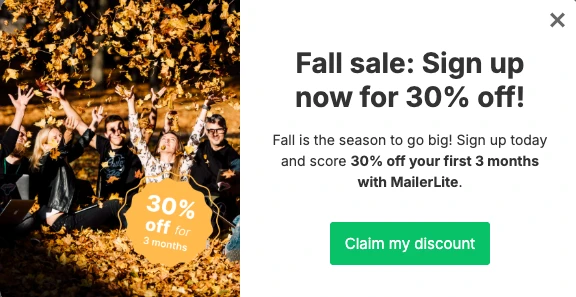
Here are some design tips to create a showstopping email coupon:
Colors: Choose a brand-consistent, eye-friendly color scheme
Stand out: Make the deal and the CTA pop. You have about 2.5 seconds to grab attention!
Clear font: Pick something quick and easy to read.
Keep it simple: Avoid clutter that drowns out the discount.
White space: Use healthy spacing to make your coupon stand out.
Provide clear instructions
Don't leave your customers guessing! Detail exactly how to use the coupon code to avoid any confusion. This includes where to apply it, any minimum purchase requirements, or excluded products.
For example, clearly state: "Enter code SUMMERFUN at checkout". A smooth redemption process makes for a happy customer.
Add a strong, clear CTA
Your call-to-action (CTA) is the most important button or link in your email. Use action-oriented phrases that tell your audience exactly what to do next.
Instead of a generic "Click here," opt for something like "Redeem your discount now," "Shop the sale," or "Claim your free gift." Make it prominent, easy to spot, and compelling.
Here’s an example of an eye-catching email coupon with a strong CTA from MailerLite:
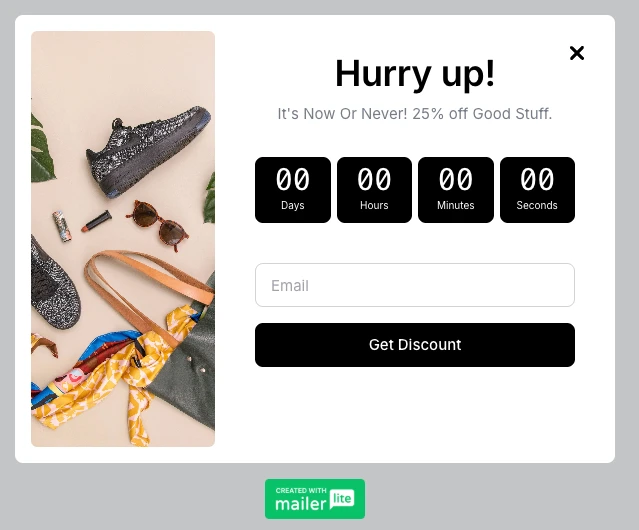
Technical and operational best practices
You've planned your coupon, crafted your email, and designed it for impact. Now comes the nitty-gritty: making sure your coupon campaigns run smoothly behind the scenes. These tips will help you maximize your reach and prevent any hiccups.
Make it mobile-friendly
Most people check emails on their phones! So, your coupon email needs to look good and work perfectly on mobile devices. A clunky design or hard-to-read coupon code on a small screen can quickly lead to your offer being ignored. Always test your emails on various phones and tablets before sending.
Use an expiration date
Nothing creates a sense of urgency quite like a deadline. Adding a clear expiration date encourages quicker action from subscribers. Whether it's a "Flash Sale: Ends Tonight!" or a "Weekend Special," a clear timeframe makes people act before they miss out.
Use single-use codes
You could use common codes like "SAVE10," “WELCOME15, and so on. But if you want to take it to the next level, you could also consider unique, single-use codes. Check out our guide on how to send emails with discount codes from your e-commerce stores to learn how to send single-use codes on MailerLite.
These personalized codes prevent misuse (like sharing widely or multiple uses). They give you more control and ensure discounts go to your intended audience, making email campaigns more effective and secure.
Automate it
Sending coupons manually can be a lot of work, and you might miss key moments. This is where automation comes in handy. Once you have your subscribers segmented and grouped, you can set up automated email coupons that will reach them at the perfect time.
Email automation triggers let you program when emails are sent based on different automation triggers. For example, if subscribers have spent over $300, you could send them an automated VIP coupon with a special offer.
Consider a countdown timer
Want to really drive that sense of urgency home? A visual countdown timer embedded right in your email can be incredibly powerful. Watching the seconds tick away until a limited-time offer expires visually reinforces the limited-time nature of your coupon, prompting immediate decisions and increasing click-through rates. It’s a compelling visual cue that works wonders for flash sales.
Avoid spammy words in subject lines
While you want exciting subject lines, be careful about words that trigger spam filters. Stick to clear, benefit-driven language, avoiding terms that scream "spam." Common examples to steer clear of include: "Free," "Win," "Cash," "$$$," "Limited Time Offer!!!", "Act Now," or excessive exclamation marks and ALL CAPS. Keep it professional yet enticing.
How to create an email coupon with MailerLite
Feeling excited to launch your own email coupon into the world? Here’s how to do it with MailerLite:
Create a new campaign using the drag & drop editor.
Select the Coupon/Voucher block and drag it into the desired position in your newsletter.
Hover your mouse over the block and select the pen icon.
You can then edit the coupon settings in the right-hand column of your editor, including the headings, text and coupon code.
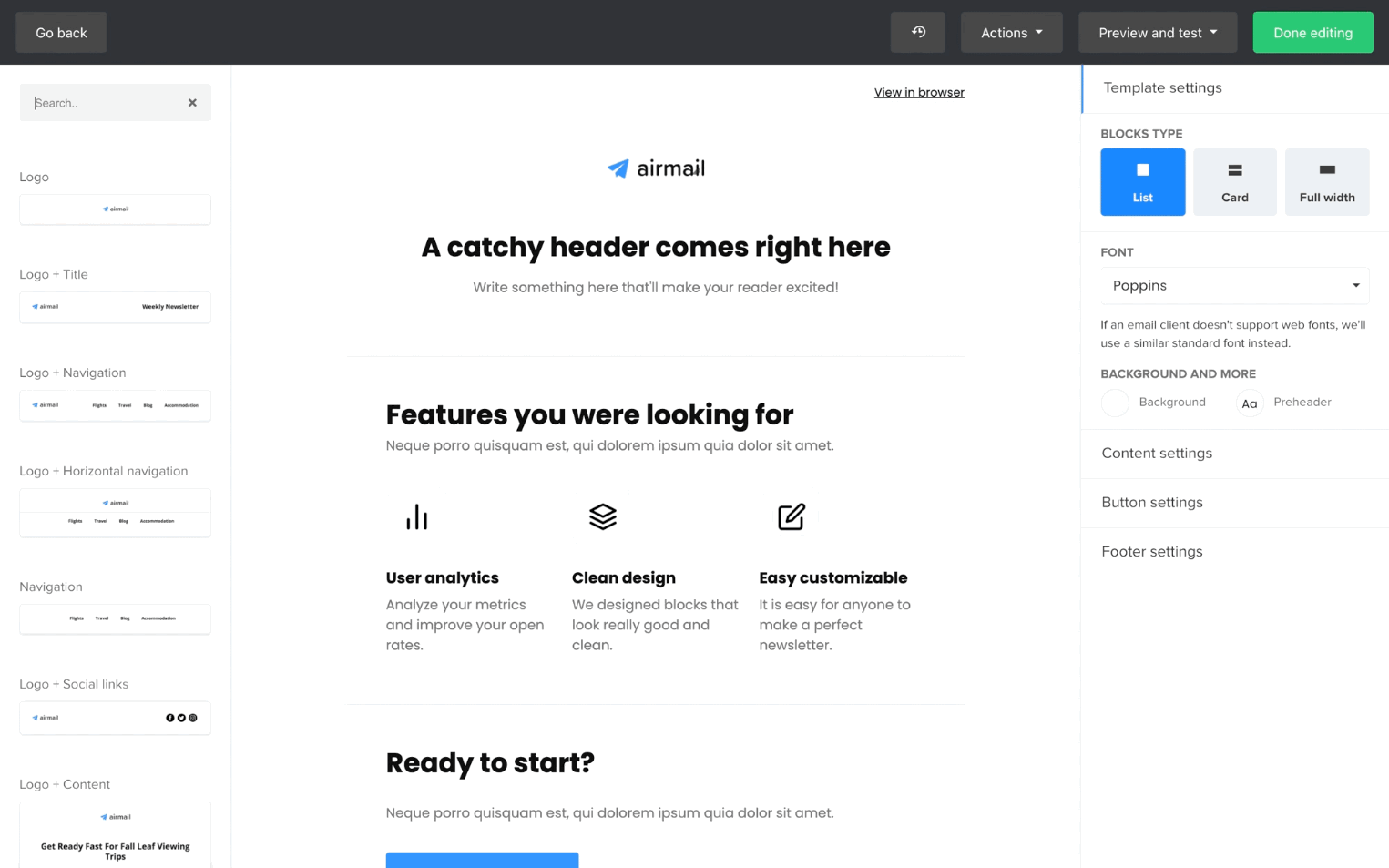
Have a Shopify or a WooCommerce store? Check out our detailed guide on how to trigger coupon code emails from your Shopify or WooCommerce or platforms.
How to implement and measure your coupon campaigns
You've planned your coupon, crafted your email, and considered best practices. Now for the exciting part: seeing how it performs!
Beyond open and click-through rates, dig into these key metrics:
Redemption rate: This tells you how many sent coupons were actually used, indicating how appealing your offer was and how well your email prompted action.
Revenue generated: The total sales directly attributed to your coupon campaign.
Return on investment (ROI): Compare revenue to campaign cost (including discount value) to measure overall profitability.
A/B testing: This is one of your best friends for figuring out what resonates most with your audience. Fine-tune your promo codes with A/B testing by sending two versions of the email to a small sample. The "winner"—the version that performs best based on your chosen metric—then automatically goes to the rest of your audience.
For example, test if subscribers prefer a percentage discount or free delivery.
Go to your MailerLite dashboard and select the A/B test campaign type
Choose to test by 'email content'
Create 2 versions: one with free delivery and one with the discount
The winning version (we advise choosing this by the most clicks rather than the most opens) will be sent to the rest of your email subscribers. This way, you're always learning and optimizing.
Analytics: Dive into your email marketing platform's analytics to refine your strategy. Beyond the core metrics, pay attention to metrics like:
Which segments responded best
Which products were most frequently purchased with a coupon
The time of day or week that generated the most redemptions
These insights can inform your future segmentation, offer types, and sending schedules, making your campaigns more effective over time.
Ready to see these strategies in action? Why not start building your own email coupon campaign today and track your results? The insights you gain will be invaluable for future success!
Ready, set, COUPON!
The days of newspaper coupons and collecting flyers are long gone, but email coupons are here to stay. Stay ahead of current email marketing trends by incorporating discounts and vouchers into your newsletters. Your subscribers will be over the moon!
Have you tried using email coupons in your newsletters, yet?
